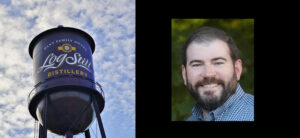Mountain streams help drive production of the brand’s vermouths and sparkling wines
Hamilton, Bermuda, March 22, 2017 – In celebration of World Water Day today, MARTINI®, as part of the Bacardi family of brands, maintains an enduring commitment to sustainability. From the breathtaking magnificence of the northern Italian Alps comes pure power – hydroelectric power – that helps drive sustainable production of MARTINI vermouths and sparkling wines.
“Hydropower – the production of electrical power through the use of falling or flowing water – is one of the cleanest ways to produce electricity without significant impact to the environment,” says Fulvio Baratella, MARTINI Technical Service Manager, in charge of environmental engineering at the MARTINI facility.
MARTINI Energized by Hydropower from the Italian Alps
In the village of Pessione, just outside Turin, Italy, the largest MARTINI facility in the world has been in operation for more than 150 years. Since 2010, almost all of the electricity consumed at the facility comes from renewable sources, including hydropower. “With the use of renewable energy, we have cut greenhouse gas emissions for the brand by more than 40 percent, equivalent to removing more than 800 cars from the highway,” explains Giorgio Castagnotti, MARTINI Operations Director, responsible for all operations at the Pessione site. “In addition to the more than 40 percent reduction in greenhouse gas emissions since 2006, MARTINI has saved 100,000 of its cork stoppers from going to landfills by reusing them for natural decorations and green building.”
Here’s how the hydroelectricity is generated: Water from the mountain streams in the nearby Alps flows into rivers winding through Italy’s Aosta valley. Gruppo CVA, a leading producer of hydropower in Italy, uses hydraulic turbines to convert the water flow into hydroelectric energy for MARTINI production.
However, the process does not stop there. “Once the water passes through the plant, generating clean energy, it continues flowing down toward the valley. The water continuously moves through a series of hydroelectric facilities downstream. They all use the same process over and over to generate energy,” explains Alberto Sartori, Commercial Director of CVA Trading.
The CVA facility, originally built in 1921, was established with conservation top-of-mind. CVA wanted to ensure its water sensitive facility didn’t use chemical-based paints so it designed an interior adorned with hand-stenciled graphite and cobalt shields instead of paint. The building also rests within a designated sanctuary that offers protection to wildlife in harsh winter months.
Building on current programs and efficiencies that reduce its environmental impacts, the Bacardi “Good Spirited” sustainability program sets specific goals in 1) Responsible Sourcing, 2) Global Packaging, and 3) Operational Efficiencies to help the company reach its vision of a net-zero impact:
To learn more about Bacardi Limited and its “Good Spirited: Building a Sustainable Future” environmental initiative for sourcing, packaging and operational efficiencies across the entire Bacardi family of premium spirits and wine brands, visit Bacardi Limited Good-Spirited.














